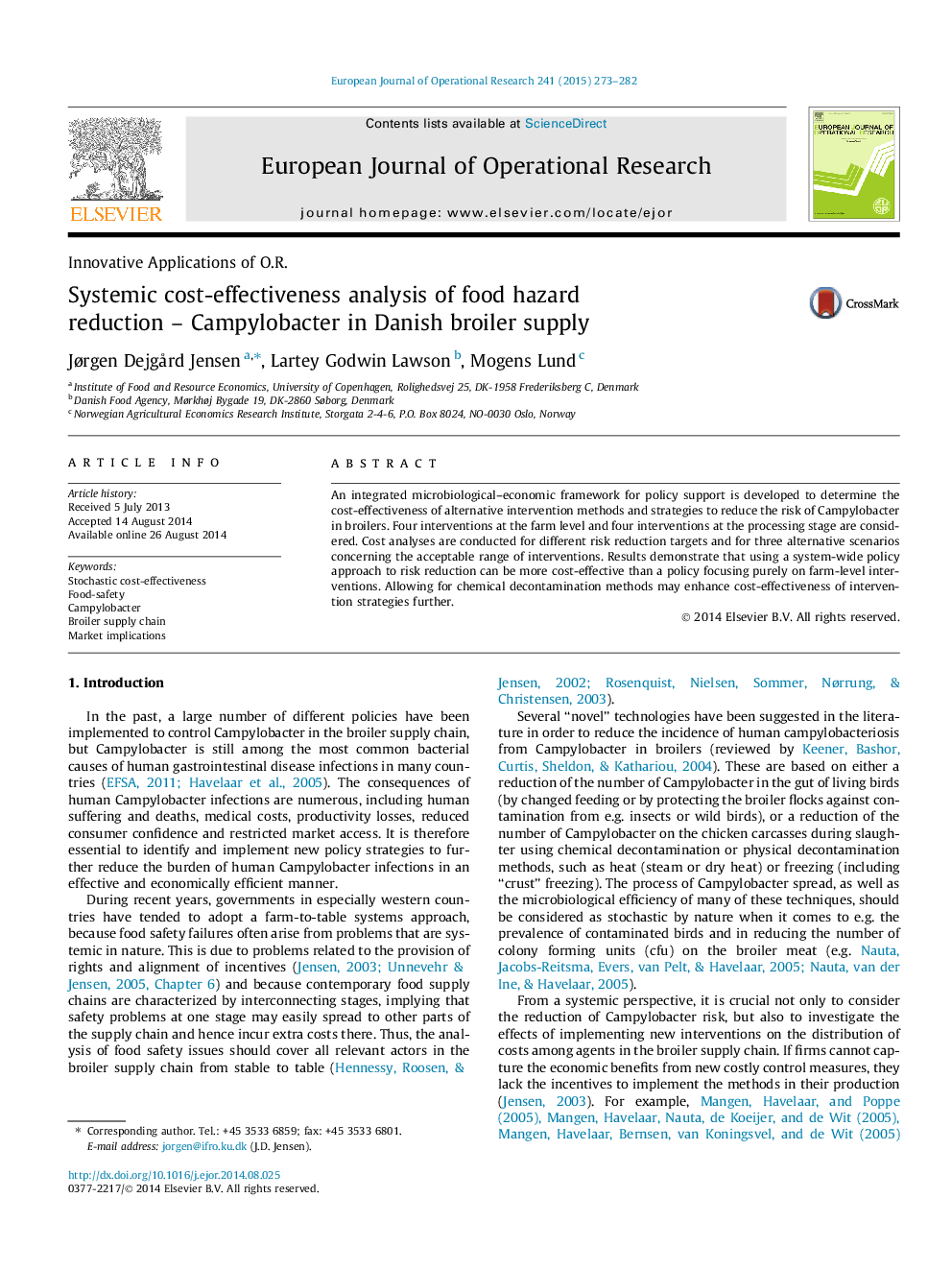| Article ID | Journal | Published Year | Pages | File Type |
|---|---|---|---|---|
| 479620 | European Journal of Operational Research | 2015 | 10 Pages |
•Tool for analysing chain-wide cost-effectiveness of food safety interventions.•Strategies emphasizing downstream interventions are relatively cost-effective.•Strategies allowing chemical treatment are relatively cost-effective.•Effectiveness of domestic interventions may be undermined by increased imports.
An integrated microbiological–economic framework for policy support is developed to determine the cost-effectiveness of alternative intervention methods and strategies to reduce the risk of Campylobacter in broilers. Four interventions at the farm level and four interventions at the processing stage are considered. Cost analyses are conducted for different risk reduction targets and for three alternative scenarios concerning the acceptable range of interventions. Results demonstrate that using a system-wide policy approach to risk reduction can be more cost-effective than a policy focusing purely on farm-level interventions. Allowing for chemical decontamination methods may enhance cost-effectiveness of intervention strategies further.
